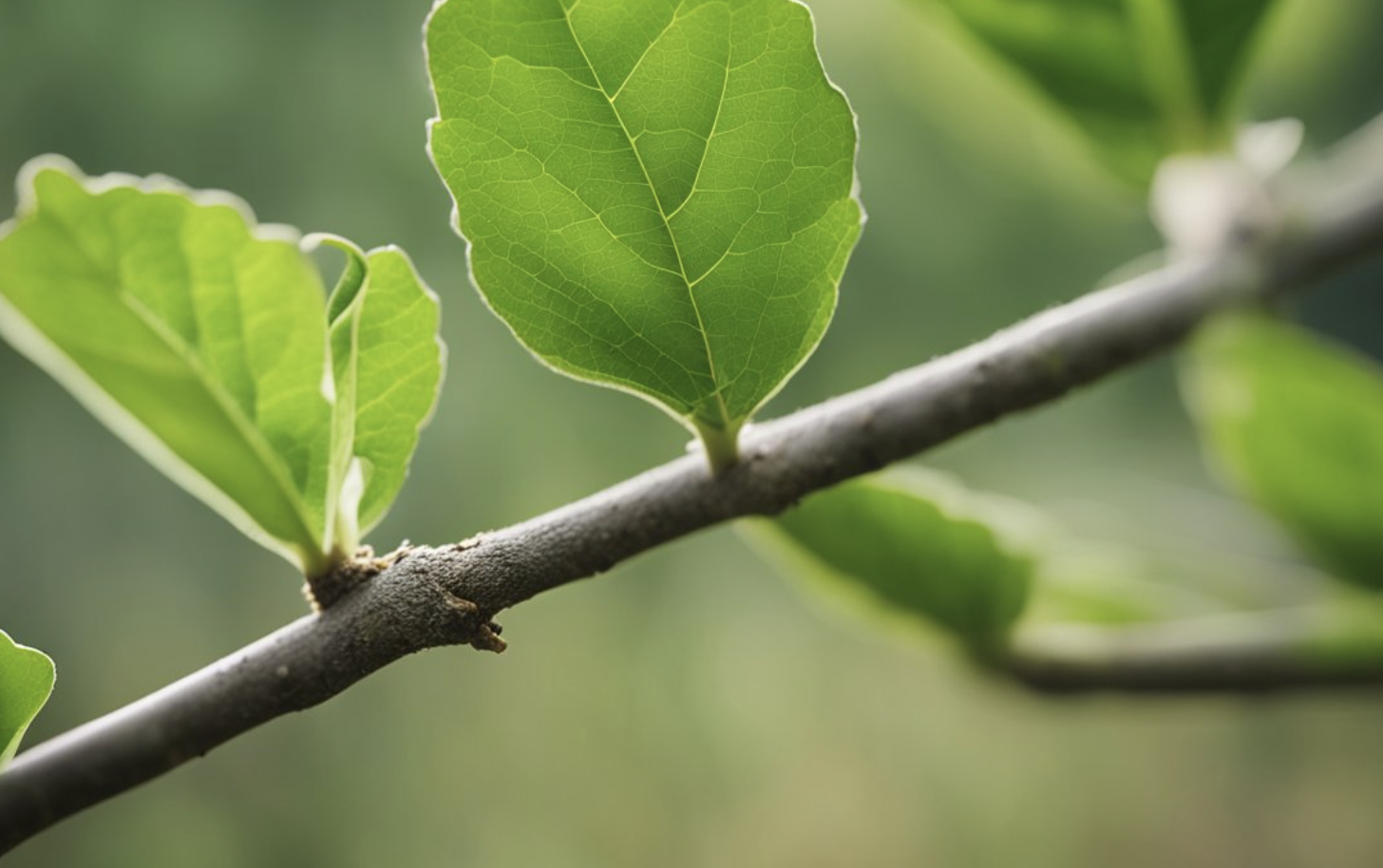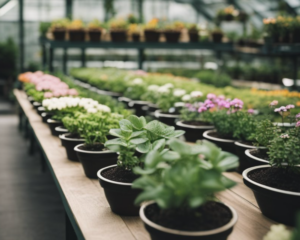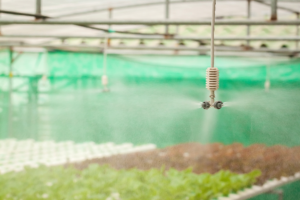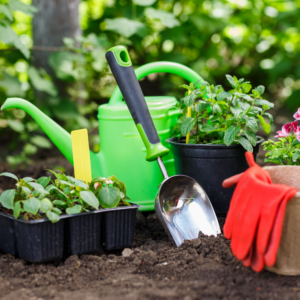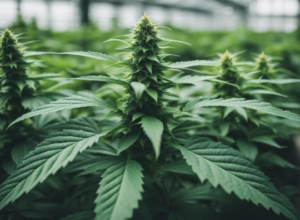Grafting plants is a cool technique that many gardeners use to combine the best traits of two different plants into one. This method involves taking a cut from one plant and attaching it to another, allowing them to grow together as a single plant. It’s like plant magic, but there’s some science behind it.
I’ve always been fascinated by how grafting can improve the hardiness of plants or even produce better fruits and flowers. For example, you can graft a tasty fruit variety onto a more robust rootstock, which helps the fruiting part of the plant thrive in less-than-ideal conditions.
The best part is, grafting isn’t just for the experts. With a little patience and practice, anyone can learn this technique and start experimenting in their own garden.
Understanding Grafting Basics
Grafting is a fascinating technique in horticulture. It involves joining two plants to grow as one, with many practical benefits.
What Is Grafting?
Grafting combines two different plants so they grow together as a single unit. The upper part, called the scion, is grafted onto the lower part, known as the rootstock.
Depending on the desired outcome, there are various grafting methods like budding, whip grafting, and cleft grafting. Each technique requires precision and care to ensure the two plants successfully unite and thrive.
Reasons for Grafting Plants
There are several good reasons why people graft plants. One main reason is to improve plant hardiness and disease resistance by using a strong rootstock.
Grafting can also boost fruit production or combine the best traits of different plants. In some cases, it’s done to repair damaged plants or trees. This technique can save years of growth time compared to starting from seed.
Grafting Terminology
To make grafting easier to discuss, here are some key terms:
- Scion: The upper part of the graft, which includes the buds that will grow.
- Rootstock: The lower part of the graft, providing the root system.
- Cambium: A growth layer that must align between scion and rootstock for a successful graft.
- Bud: The part of the scion that will develop into a new shoot.
Learning these terms helps in understanding grafting techniques and their applications better.
Preparing for Grafting
Before grafting plants, it’s crucial to pick the right rootstocks and scion wood, gather the necessary tools, and choose the best time of year for the process.
Selecting Quality Rootstocks & Scions
I always prioritize choosing healthy and compatible rootstocks and scions. Rootstocks should be disease-resistant and vigorous, ensuring strong growth. When I look for scion wood, I prefer healthy, non-flowering wood from the current or previous year’s growth. Compatibility between the two is key, as they need to successfully bond together.
For fruit trees, I select rootstocks that match the soil type and climate. Checking for any signs of disease or pests on both rootstocks and scions is a must to avoid complications later on.
Tools of the Trade
Having the right tools makes grafting a lot easier. My go-to tools include sharp grafting knives for clean cuts, pruners for trimming, and grafting tape to secure the graft. I ensure my knives are always sharp to avoid jagged cuts, which can hinder the grafting process.
In addition to these basics, I also keep rubber bands and parafilm handy. They help secure the grafts and keep moisture levels balanced. Cleanliness is important—sterilizing tools before use prevents spreading diseases between plants.
Time of Year for Grafting
Timing can make or break a grafting project. I prefer grafting in late winter or early spring when the plants are still dormant but getting ready to grow. This period is optimal because the sap is starting to flow, making it easier for rootstocks and scions to fuse.
For some plants, summer grafting can also work, but it often requires more care regarding moisture and temperature control. I find that preparing and organizing everything ahead of time ensures a smoother grafting process.
Common Grafting Techniques
Grafting is a fascinating technique that lets us combine different parts of plants to improve growth and yield. In this section, I’ll share some popular methods and their benefits.
Bud Grafting Methods
Bud grafting involves taking a bud from one plant and attaching it to the stem of another. It’s commonly used for fruit trees and roses.
There are several types of bud grafting, including T-budding and chip budding. T-budding involves making a T-shaped cut in the rootstock and slipping the bud inside. Chip budding requires a small chip of wood and bark to be removed, which is then replaced by a bud. This method is great for woody plants with thin bark.
Whip and Tongue Grafting
Whip and tongue grafting is a technique used to join small stems of similar diameter. It involves making matching slanting cuts on both the scion and the rootstock.
This method ensures a large area of cambium contact, increasing the chances of a successful graft. To improve the connection, a small tongue cut is made on each piece to lock them together. This technique is widely used for fruit trees and ornamental plants.
Cleft Grafting
Cleft grafting is a common method used to join a smaller scion to a larger rootstock. It involves cutting a cleft or split into the rootstock and inserting the scion into the gap.
This technique is particularly useful for grafting onto established trees or when changing varieties. It’s mostly used in deciduous trees like apples and pears. The cambium layers of both the scion and rootstock must align well for the graft to be successful.
Bridge Grafting
Bridge grafting is used to repair damage to a tree’s bark, such as from mechanical injury or disease. It involves placing small pieces of scion wood across the damaged area to reconnect the cambium layers.
This technique helps restore the flow of nutrients and water between the roots and leaves. It’s mainly used for large trees that have suffered significant bark damage. Bridge grafting can save valuable trees and extend their lifespan.
Grafting Different Plant Types
Grafting involves joining parts from two plants to form a single, thriving plant. Different plant types require specific techniques and considerations for successful grafting.
Fruit Trees and Shrubs
Fruit trees like apple trees often need grafting to produce reliable and high-quality fruit. For example, I often use the technique of whip-and-tongue grafting for apples due to its strong union and high success rate. Cleft grafting is an alternative used for older trees, ensuring vigorous growth and compatibility.
Shrubs can also benefit from grafting. Specific varieties of flowering shrubs may be grafted onto rootstocks that offer better disease resistance. Sometimes, I graft ornamental shrubs to combine the desirable traits of both plants, like unique colors or growth habits, onto disease-resistant rootstocks.
Roses and Flowering Plants
Roses epitomize the elegance of any garden and are frequently grafted. I usually use T-budding for grafting roses, as it creates a strong bond and promotes robust flower production. This involves inserting the bud of a desirable rose variety into the rootstock of a hardy, disease-resistant variety.
Flowering plants, such as certain types of hibiscus or jasmine, also undergo grafting to enhance flower quality and growth. Techniques may vary, but the goal is often to combine a beautiful flowering top with a vigorous root system, ensuring longevity and bloom. This often results in healthier plants with more abundant blossoms.
Herbaceous and Vegetable Grafting
Herbaceous plants and vegetables can also be grafted to improve yield and disease resistance. For instance, I find that tomato grafting onto disease-resistant rootstock significantly boosts productivity. This technique can lead to stronger plants that produce fruit consistently throughout the growing season.
Herbaceous plants, like specific perennial herbs or ornamental annuals, also benefit from grafting. Grafting can bolster resilience to environmental stressors, ensuring that these plants thrive in less-than-ideal conditions. The approach typically involves splice grafting or side grafting, depending on the plant’s specific needs and structure.
These methods allow for creative and practical improvements in a garden, ensuring that plants are healthier and more productive. The techniques may require practice, but the results are often well worth the effort.
Aftercare for Grafted Plants
Taking care of grafted plants requires specific attention to healing and maintenance, as well as proper watering and nutrient needs to support growth.
Healing and Maintenance
After grafting, the plant’s healing process is crucial. I always make sure to keep the grafted area protected and clean. It’s essential to cover the graft with grafting tape or grafting wax. This shields the wound from pests and disease while it heals.
Checking the graft regularly is important. I gently remove or adjust the tape as the plant grows to avoid restricting growth. Pruning any new shoots from the rootstock can help the grafted section thrive. Always ensure tools are sterilized to prevent infection.
I often support the plant with a stake to keep it upright and reduce strain on the graft area. This extra support helps the plant focus its energy on healing and growth.
Watering and Nutrient Requirements
Watering grafted plants builds their strength and supports nutrients delivery. I water carefully to keep the soil moist but not waterlogged. Too much water can cause root rot, while too little can hinder healing.
Using a balanced fertilizer is a good move. A mix of nitrogen, phosphorus, and potassium supports overall growth. During the initial weeks, I apply a diluted fertilizer to avoid stressing the plant.
I watch the plant’s leaves for health signals. Yellowing can indicate nutrient issues or overwatering, prompting me to adjust care accordingly. Monitoring regularly ensures the plant gets exactly what it needs for robust growth.
Benefits and Challenges
Grafting plants has numerous advantages like improved disease resistance and higher yield, but it also comes with challenges such as compatibility issues and varying graft success rates.
Disease Resistance and Hardiness
One of the biggest perks is the enhanced disease resistance and hardiness. By grafting, I can combine the rootstock of a disease-resistant plant with the scion of a plant that produces better fruit.
This provides a solid defense against soil-borne diseases and pests. The hybrid plant inherits the toughness of the rootstock, improving its overall survival rate. Also, grafted plants usually recover faster from environmental stress, like severe weather conditions.
Enhancing Productivity and Yield
Grafting can significantly boost productivity and yield. By selecting rootstocks known for their vigor and combining them with high-yielding scions, I can achieve larger and more consistent fruit production.
For instance, fruit trees like apples and tomatoes benefit immensely from this practice. Additionally, grafted plants often start producing fruit earlier than their non-grafted counterparts. This leads to increased profitability, especially in commercial farming.
Compatibility and Graft Success Rates
Compatibility is a crucial factor for successful grafting. Not all plants are suitable partners; closely related species tend to have higher success rates. Graft compatibility affects the union’s stability and the overall lifespan of the plant.
I have to consider the compatibility of the vascular systems, which need to align perfectly for nutrient and water transport. While many grafts succeed, failure can happen due to incompatible pairs or environmental factors like temperature and humidity.
Conclusion
Grafting plants is an incredibly useful technique that I’ve found to be both fascinating and rewarding. It lets me combine the best features of two different plants, which is pretty awesome. Using this technique, I can create unique plant varieties that wouldn’t exist naturally.
The steps may seem a bit intimidating at first. However, with practice, it becomes second nature. Having the right tools and knowledge makes the process smoother, too.
When I see the graft take hold, it’s always a thrilling moment. It’s like a little victory each time.
If you’re thinking of trying it out, go for it. Experimenting with different combinations can lead to unexpected and exciting results. Plus, the process itself is a great learning experience.
I hope this article has given you some insights and maybe even inspired you to start grafting your own plants. Happy grafting and don’t forget to check out our other articles on greenhouse gardening and much more!

